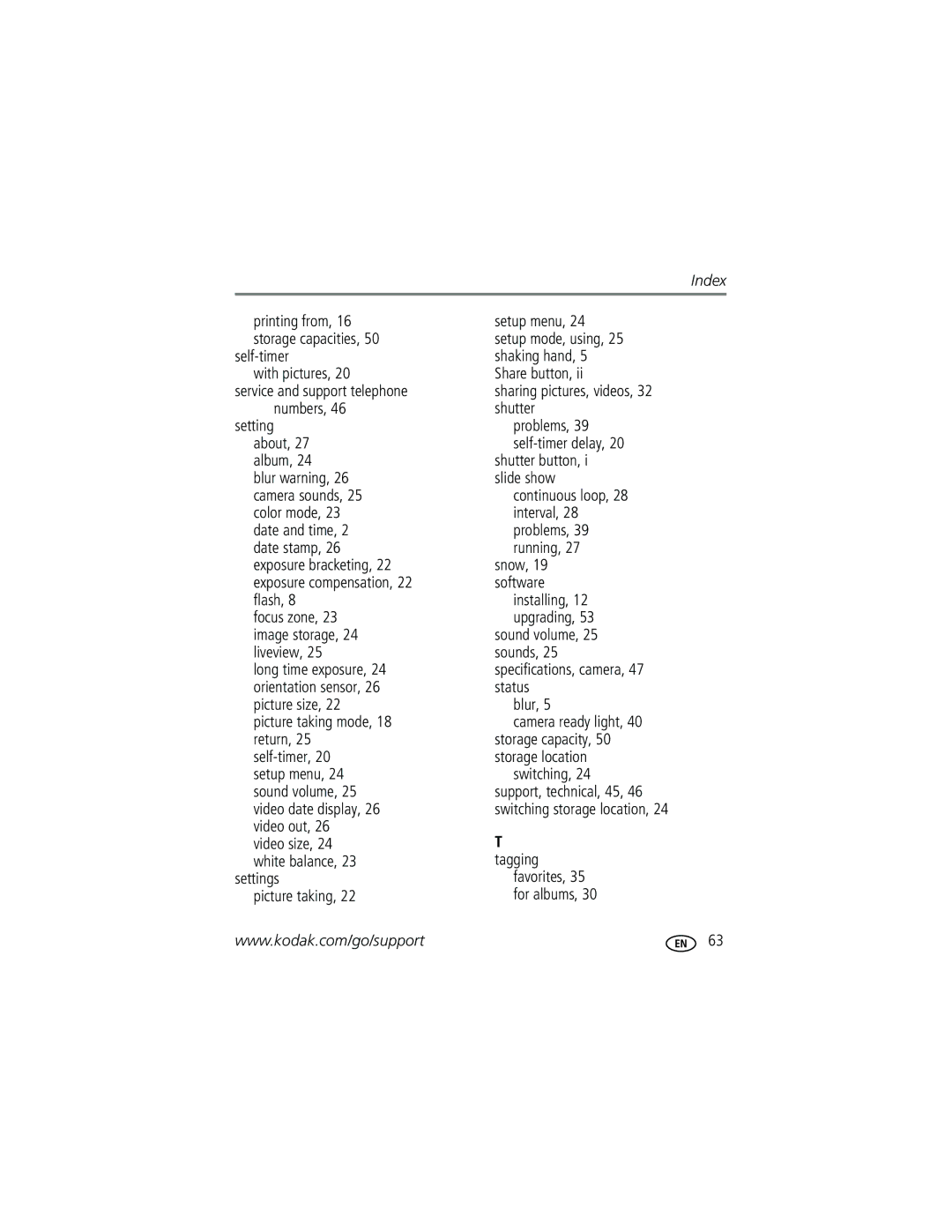C743, C703, C743 specifications
The Kodak C703 and C743 digital cameras are compact point-and-shoot models that cater to both novice and seasoned photographers looking for versatility and ease of use in their photography experience. With a blend of practicality and technology, these cameras have made a mark in the market for their user-friendly features and impressive performance.The Kodak C703 features a 7-megapixel sensor, which allows for high-resolution images suitable for both prints and shared digital formats. It boasts a 3x optical zoom lens, enabling users to capture subjects up close while maintaining clarity. This camera is designed with simplicity in mind, featuring an intuitive menu system and a bright 2.4-inch LCD screen that facilitates effortless shooting in various lighting conditions. Additionally, the C703 incorporates on-camera editing features, including cropping, red-eye removal, and brightness adjustments, enabling users to fine-tune their images directly on the device.
On the other hand, the Kodak C743 enhances the shooting experience with an 8-megapixel sensor, offering even greater resolution for detail-rich photographs. Similar to the C703, the C743 includes a 3x optical zoom and a 2.4-inch LCD display. One of its standout features is the ability to capture videos in VGA quality, allowing users to document life events beyond still images. The C743 also integrates several automatic scene modes, which adjust the camera settings based on the environment, making it effortless for users to achieve optimal results in different scenarios.
Both models are powered by Kodak’s innovative Perfect Touch Technology, which enhances image quality through automatic color correction and brightness optimization. This technology ensures that photos remain vibrant and true to life, reducing the need for extensive post-processing. Another notable characteristic is the ability to shoot in multiple aspect ratios, including standard 4:3 and widescreen formats, offering flexibility for photographers focusing on different mediums.
In terms of build, the Kodak C703 and C743 are compact and lightweight, making them convenient for travel and day-to-day use. Their robust design is complemented by durability features that withstand regular use. These cameras use easy-to-find AA batteries, further emphasizing their portability and ease of maintenance.
In conclusion, the Kodak C703 and C743 are exemplary choices for those seeking reliable, user-friendly cameras loaded with essential features. With their high-resolution capabilities, versatile shooting options, and image-enhancing technologies, they stand as valuable tools for capturing memories and creative expressions. Whether for everyday photography or special occasions, these cameras deliver performance that satisfies various photographic needs.

